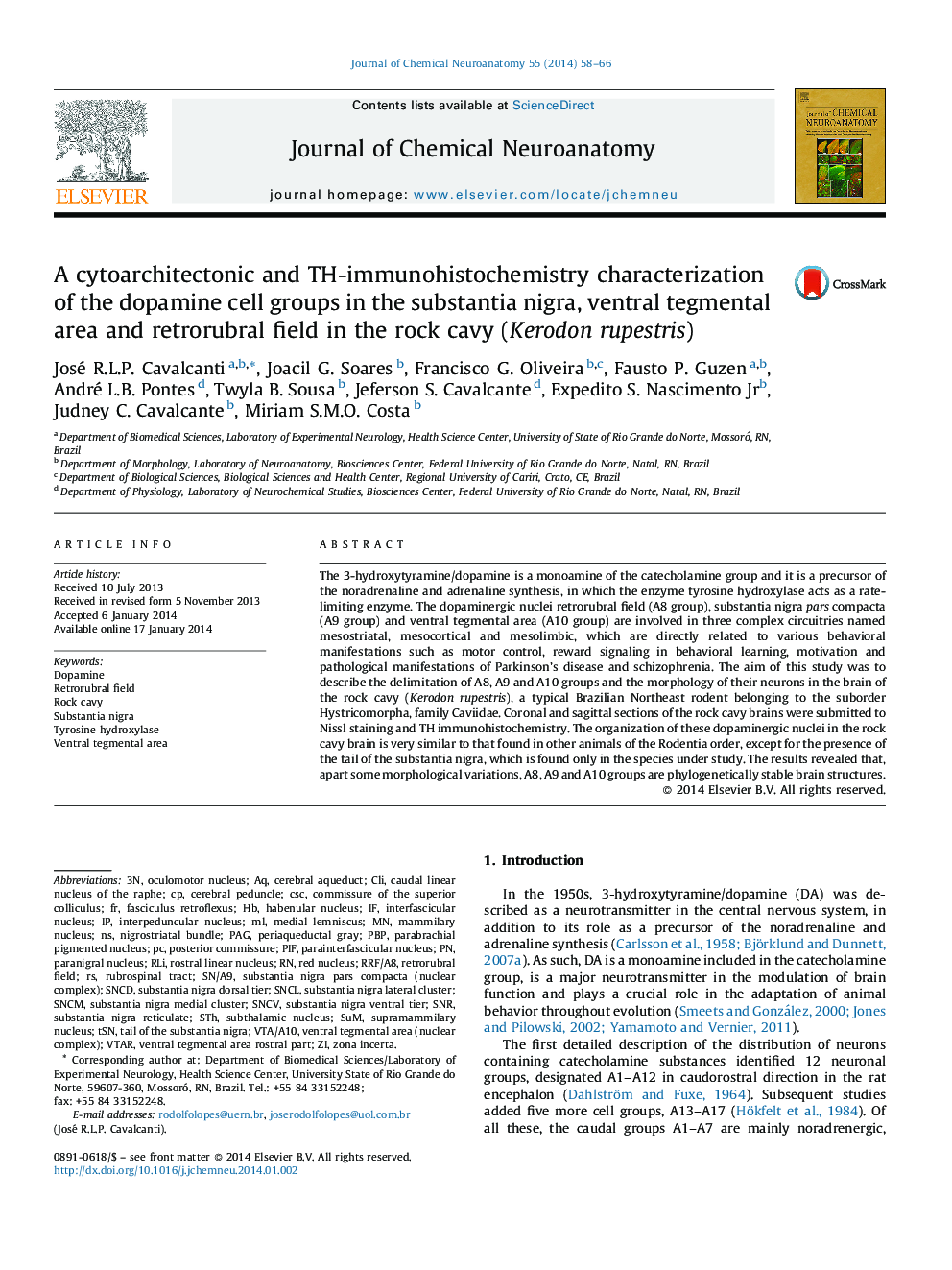| Article ID | Journal | Published Year | Pages | File Type |
|---|---|---|---|---|
| 8336268 | Journal of Chemical Neuroanatomy | 2014 | 9 Pages |
Abstract
The 3-hydroxytyramine/dopamine is a monoamine of the catecholamine group and it is a precursor of the noradrenaline and adrenaline synthesis, in which the enzyme tyrosine hydroxylase acts as a rate-limiting enzyme. The dopaminergic nuclei retrorubral field (A8 group), substantia nigra pars compacta (A9 group) and ventral tegmental area (A10 group) are involved in three complex circuitries named mesostriatal, mesocortical and mesolimbic, which are directly related to various behavioral manifestations such as motor control, reward signaling in behavioral learning, motivation and pathological manifestations of Parkinson's disease and schizophrenia. The aim of this study was to describe the delimitation of A8, A9 and A10 groups and the morphology of their neurons in the brain of the rock cavy (Kerodon rupestris), a typical Brazilian Northeast rodent belonging to the suborder Hystricomorpha, family Caviidae. Coronal and sagittal sections of the rock cavy brains were submitted to Nissl staining and TH immunohistochemistry. The organization of these dopaminergic nuclei in the rock cavy brain is very similar to that found in other animals of the Rodentia order, except for the presence of the tail of the substantia nigra, which is found only in the species under study. The results revealed that, apart some morphological variations, A8, A9 and A10 groups are phylogenetically stable brain structures.
Keywords
SNCVcaudal linear nucleus of the rapheCLiPIFTSNPBPRLIRock cavyFasciculus retroflexusVTArPAGSNCDSNRparanigral nucleusSTHCSCsubstantia nigratyrosine hydroxylaseperiaqueductal grayDopaminerubrospinal tractretrorubral fieldcerebral pedunclecerebral aqueductmedial lemniscusSUMzona incertaventral tegmental areaHabenular nucleusinterpeduncular nucleusoculomotor nucleusInterfascicular nucleusred nucleusSubthalamic nucleusPosterior commissure
Related Topics
Life Sciences
Biochemistry, Genetics and Molecular Biology
Biochemistry
Authors
José R.L.P. Cavalcanti, Joacil G. Soares, Francisco G. Oliveira, Fausto P. Guzen, André L.B. Pontes, Twyla B. Sousa, Jeferson S. Cavalcante, Expedito S. Jr, Judney C. Cavalcante, Miriam S.M.O. Costa,
